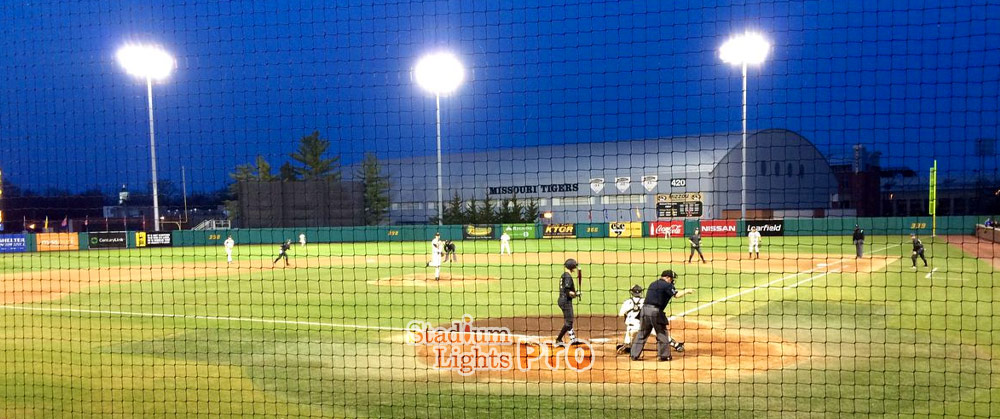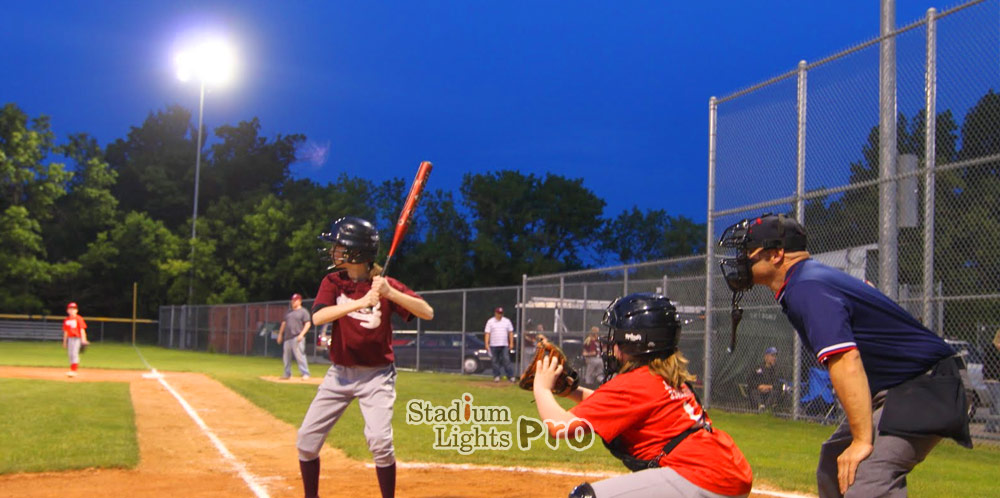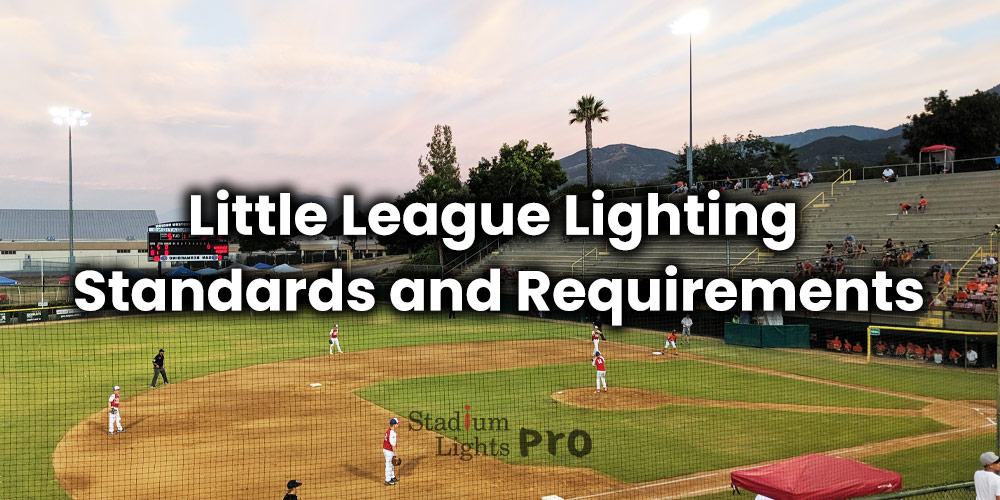Little League baseball is a popular youth sport that is enjoyed by millions of children around the world. To ensure the safety and enjoyment of players and spectators, it is essential that Little League fields meet certain lighting standards and requirements. In this article, we will provide an overview of the lighting standards and requirements for Little League games and practices, including the minimum footcandle levels required for each level of play and the importance of maintaining a properly designed and installed lighting system.
We will also discuss some of the considerations that go into designing a lighting system for a Little League field, and provide some tips for maintaining and troubleshooting the lighting system. Whether you are a coach, parent, or player, this information will help you understand the importance of lighting in Little League and how to ensure that your field meets the necessary standards.
Table of Contents
ToggleLittle League Lighting Standards
Footcandle (brightness) requirement

There are specific lighting requirements for Little League baseball games and practices, which are intended to ensure that the field is adequately illuminated for play. These requirements vary depending on the level of play, but generally, the following guidelines apply:
- For Minor League (ages 7-12) and Major League (ages 9-12) games and practices, the field must be illuminated to at least a minimum of 50 footcandles at field level.
- For Junior League (ages 13-14) and Senior League (ages 14-16) games and practices, the field must be illuminated to a minimum of 70 footcandles at field level.
- For Big League (ages 16-18) games and practices, the field must be illuminated to a minimum of 90 footcandles at field level.
Besides, the baseball field lighting system is properly designed and installed, with lighting poles spaced appropriately to provide uniform illumination across the entire field.
Uniform illumination
In Little League baseball, we need to ensure that the lighting system provides uniform illumination across the entire field. This means that the light levels should be consistent from one end of the field to the other, and from one side of the field to the other.
Uniform illumination is necessary for several reasons. First and foremost, it helps to ensure the safety of the players, as it reduces the risk of players being blinded by bright spots or shadows on the field. It also helps to create a more enjoyable experience for the players and spectators, as it allows everyone to see the action on the field more clearly.
There are no specific uniformity requirements for Little League fields, but it is generally recommended that the illumination be uniform to within +/- 20% across the field. This means that the light levels should not vary by more than 20% from one location to another. For example, if the light level at one end of the field is 100 footcandles, the light level at the other end should be no less than 80 footcandles and no more than 120 footcandles. By following this guideline, you can ensure that the field is adequately illuminated and that the lighting is consistent across the entire field.
Properly designed and installed lighting system for Little League baseball

Lighting poles
There are no specific requirements for the spacing of lighting poles in Little League, but generally, the poles should be spaced in a way that provides the desired levels of illumination and uniformity.
Here are some general guidelines for lighting pole spacing in Little League:
- The poles should be spaced evenly around the perimeter of the field.
- The spacing between the poles should be based on the type and size of the fixtures being used, as well as the height and spacing of the poles.
- The poles should be spaced such that the illumination patterns overlap to create a seamless transition between poles.
- The poles should be spaced such that the light levels are consistent across the entire field, with no bright spots or shadows.
- The poles should be spaced such that the illumination is uniform to within +/- 20% across the field.
Fixtures
There are many different types of lighting fixtures that can be used for a Little League field, and the type and size of the fixtures will depend on the specific requirements of the field and the desired levels of illumination.
Light output
The light output of the fixtures should be sufficient to provide the required minimum footcandle levels at field level. For Minor and Major League games and practices, the minimum level of illumination required is 50 footcandles, for Junior and Senior League games and practices it is 70 footcandles, and for Big League games and practices it is 90 footcandles.
Beam spread
The beam spread of the fixtures should be appropriate for the intended use. For a Little League field, it is generally recommended to use fixtures with a medium or wide beam spread to provide a more even distribution of light across the field.
Color temperature
The color temperature of the fixtures should be within the range of 4000-5500K for a Little League field. This will provide a natural-looking light that is easy on the eyes and helps to reduce the risk of player fatigue.
Durability
The fixtures should be designed to withstand the rigors of outdoor sports use, including exposure to weather and impact from balls and other objects.
Electrical design
A qualified electrician should be consulted to design the electrical system for a Little League field, as it involves working with high voltage electricity and requires specialized knowledge and expertise.
Power distribution
The power distribution system should be designed to provide a reliable and safe supply of electricity to the lighting fixtures. This may include the use of transformers, distribution panels, and circuit breakers.
Grounding
The lighting system should be properly grounded to ensure the safety of players, spectators, and maintenance personnel. This may include the use of grounding rods and grounding conductors.
Emergency lighting
Emergency lighting should be provided to ensure the safety of players and spectators in the event of a power outage or other emergency. This may include the use of battery-powered emergency lighting fixtures or generators.
Maintenance
Regular maintenance of the lighting system can also help to extend the life of the fixtures and other components, and can help to reduce the risk of problems and downtime.
Inspect the fixtures and poles
Inspect the lighting fixtures and poles on a regular basis to ensure that they are in good condition and functioning properly. Look for signs of damage, such as broken lenses or bent poles, and repair or replace any damaged components as needed.
Clean the fixtures
Clean the lighting fixtures on a regular basis to remove dirt and debris that can accumulate on the lenses and other surfaces. This will help to ensure that the light output is not reduced by dirt or other obstructions.
Check the wiring
Check the wiring and connections of the lighting system to ensure that they are secure and in good condition. Repair or replace any damaged or loose wiring as needed.
Check the voltage
Check the voltage of the lighting system to ensure that it is within the recommended range for the fixtures. If the voltage is too high or too low, it can affect the performance of the fixtures and may cause them to fail prematurely.
By performing these maintenance tasks on a regular basis, you can help to ensure that the lighting system of your Little League field is functioning properly and providing the necessary illumination for play.
Conclusion
Some key considerations for the lighting system of a Little League field include the minimum footcandle levels required for each level of play, the importance of uniform illumination across the field, the selection and spacing of lighting fixtures and poles, the electrical design of the system, and the importance of regular maintenance.
If you are in need of a Little League lighting design, please don’t hesitate to contact us. Our team of lighting experts will be happy to provide you with a free design that meets the necessary standards and requirements for your field. We have experience designing lighting systems for a wide range of sports facilities, including Little League fields, and we have the knowledge and expertise to help you create a lighting system that is safe, efficient, and cost-effective. Contact us today to get started on your Little League lighting design!

